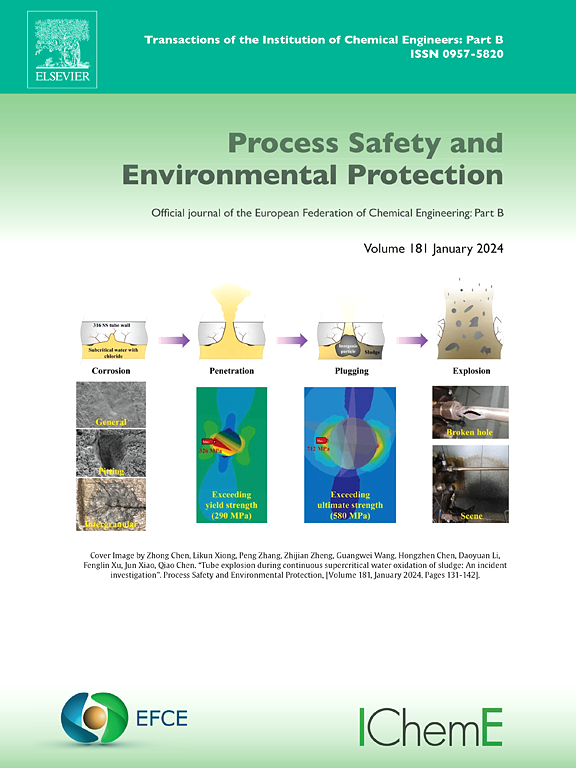Two-step ferric and biological leaching as an environmentally friendly method for improving nickel sulfide concentrate processing
IF 6.9
2区 环境科学与生态学
Q1 ENGINEERING, CHEMICAL
引用次数: 0
Abstract
The nickel and copper extraction from a nickel sulfide concentrate during a two-step oxidation process was compared to one-step biooxidation. A new approach was applied to the processing of nickel concentrates: successive ferric leaching and bioleaching of the residue obtained after ferric leaching. The two-step process included ferric leaching by biologically generated ferric sulfate solution and subsequent biooxidation by moderately thermophilic microbial communities. For experiments, a concentrate containing 16.6 % Ni and 1.73 % Cu was used. Pentlandite, violarite, pyrite, pyrrhotite, and chalcopyrite were the main sulfide minerals in the concentrate. After several cycles (13 h in total) of ferric leaching (80 °C; pulp density, 10 % (w/v)) with a solution containing 10 g/L of Fe3 +, 58.9 % of nickel and 35.0 % of copper were dissolved. Subsequent biooxidation at 45 or 50 °C (pulp density, 5 % (w/v)) using moderately thermophilic microbial communities allowed achieving maximum nickel recovery (∼98–100 %) four and eight days earlier than direct bioleaching, reducing bioleaching duration ∼1.5 times. A comparison of metal extraction using microbial communities growing at 45 and 50 °C in the bioleaching step was carried out; the duration of a nearly complete nickel leaching in the two-step process was shown to be five days shorter in the first case. Ferric leaching was not shown to alter the rate of dissolution of nickel sulfides during bioleaching. Patterns of changes in the chemical and mineral composition of leach residues, as well as in the microbial community, were revealed.
求助全文
约1分钟内获得全文
求助全文
来源期刊

Process Safety and Environmental Protection
环境科学-工程:化工
CiteScore
11.40
自引率
15.40%
发文量
929
审稿时长
8.0 months
期刊介绍:
The Process Safety and Environmental Protection (PSEP) journal is a leading international publication that focuses on the publication of high-quality, original research papers in the field of engineering, specifically those related to the safety of industrial processes and environmental protection. The journal encourages submissions that present new developments in safety and environmental aspects, particularly those that show how research findings can be applied in process engineering design and practice.
PSEP is particularly interested in research that brings fresh perspectives to established engineering principles, identifies unsolved problems, or suggests directions for future research. The journal also values contributions that push the boundaries of traditional engineering and welcomes multidisciplinary papers.
PSEP's articles are abstracted and indexed by a range of databases and services, which helps to ensure that the journal's research is accessible and recognized in the academic and professional communities. These databases include ANTE, Chemical Abstracts, Chemical Hazards in Industry, Current Contents, Elsevier Engineering Information database, Pascal Francis, Web of Science, Scopus, Engineering Information Database EnCompass LIT (Elsevier), and INSPEC. This wide coverage facilitates the dissemination of the journal's content to a global audience interested in process safety and environmental engineering.
 求助内容:
求助内容: 应助结果提醒方式:
应助结果提醒方式:


